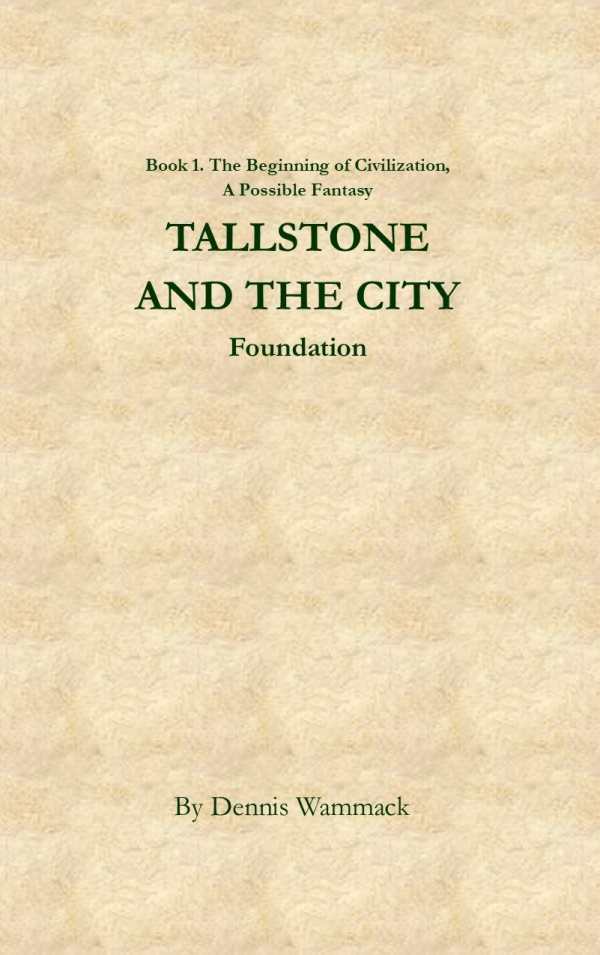
Tallstone and the City
Foundation
The etiological historical novel Tallstone and the City re-imagines the emergence of human civilization via four ambitious young hunter-gatherers.
A tribe of hunter-gatherers starts an agricultural civilization in Dennis Wammack’s speculative historical novel Tallstone and the City.
Sometime in the Stone Age, four children are born into three different nomadic tribes: Vanam, who is destined to be the next great chief; his brother, Pumi, who becomes a stone cutter’s apprentice; beautiful and intelligent Kiya; and Valki, an orphan whose cleverness and determination lead her to a new mother and a new tribe. But as these four children mature, they become dissatisfied. They’re curious about the world, and they seek out answers to life’s big mysteries.
Each member of the cast is made distinctive, and their individual actions are propulsive. Pumi and Valki pursue scientific endeavors, examining the changing of seasons and emboldening others to join in their establishment of a more permanent settlement. Kiya questions the social hierarchies that she thrives within. And elsewhere, Vanam takes controversial measures to gain power; he hopes to make his tribe the most formidable in the land.
Envy, inquisitiveness, ambition, and a need to please others drive these four individuals by turns. Vanam’s intense jealousy toward his influential younger brother pushes him toward violence and tyrannical acts, changing the book’s the power dynamics, while Valki’s confidence and appeal make her an inspirational leader of the new settlement. These four people push the boundaries of social change as they move from a hunter-gatherer style of living to an agricultural one.
Following the cast from their births through to their deaths, the book uses the teenagers’ comings-of-age to feed its natural progression. Their changing temperaments serve to escalate tensions and build suspense. Each of the four navigates the changing world in an appealing and instructive manner: they learn about nature by observing the land and the sky; they domesticate animals; and they modify the social structures of their tribes to fit their changing needs. But Vanam’s ultimate fate is under addressed at the book’s ending, and this abandoned story line undermines the book’s finale. Pumi, Valki, and Kiya’s plot lines, however, are concluded in cathartic manners.
For the cast, the substantial setting exists as both an intractable challenge and an opportunity to subvert norms. Minute details hint at the Stone Age time period, but without the book stating this context outright. The prose assumes mellow, folk-tale dimensions, choosing plain terms that result in a mythological atmosphere—if one that’s somewhat undermined by the inclusion of anachronistic terms in the cast’s conversations. Still, this steady, forward-moving story maintains its dramatic tension through to its end.
The etiological historical novel Tallstone and the City re-imagines the emergence of human civilization via four young hunter-gatherers.
Reviewed by
Aimee Jodoin
Disclosure: This article is not an endorsement, but a review. The publisher of this book provided free copies of the book and paid a small fee to have their book reviewed by a professional reviewer. Foreword Reviews and Clarion Reviews make no guarantee that the publisher will receive a positive review. Foreword Magazine, Inc. is disclosing this in accordance with the Federal Trade Commission’s 16 CFR, Part 255.
